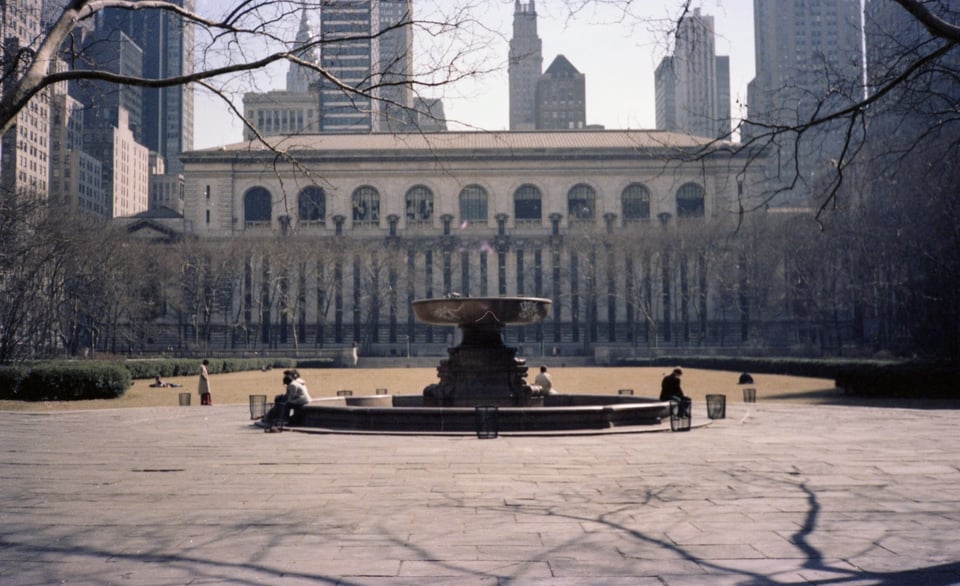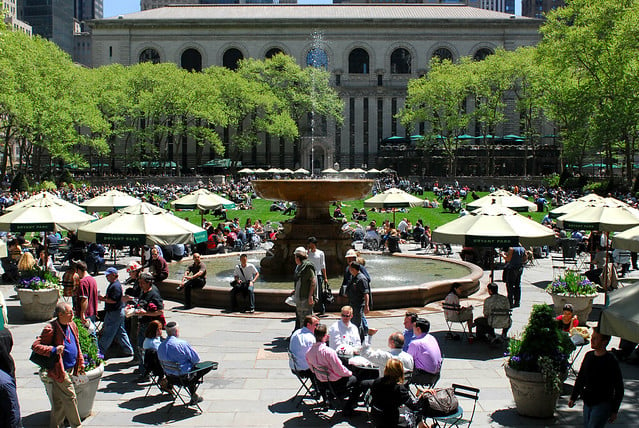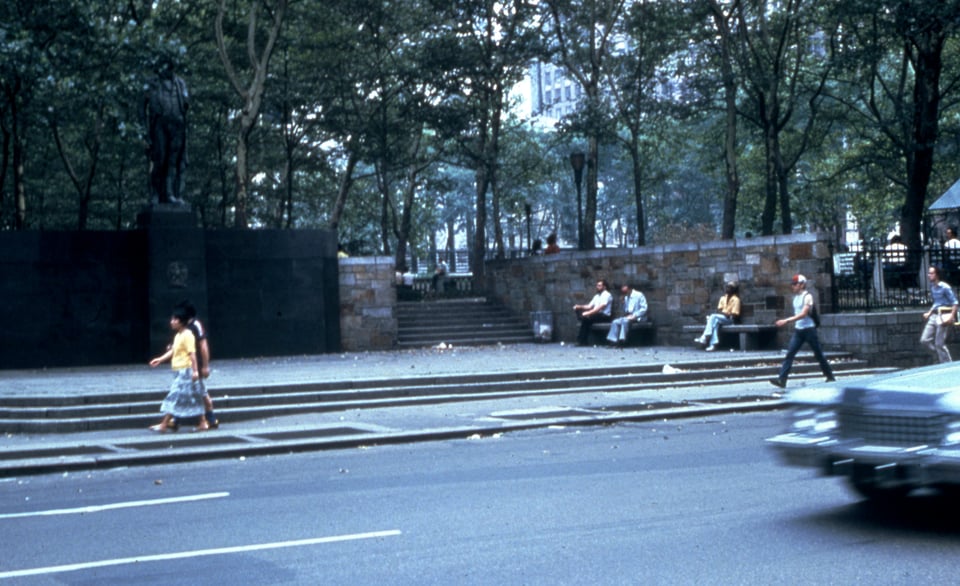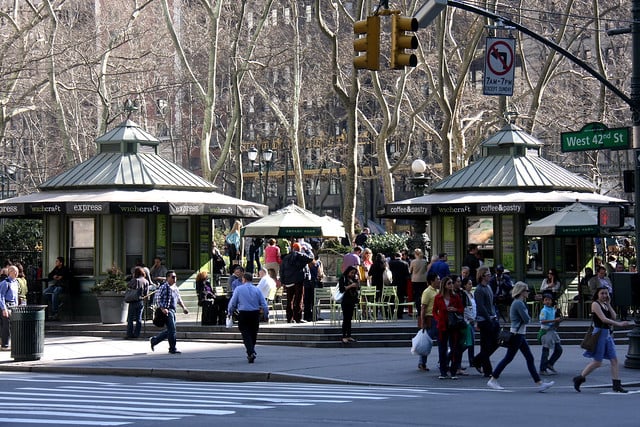Welcome to flaneuring, a newsletter featuring new resources on urban & beyond, insights, and photography.
an insight
In an effort to make parks safer, cities sometimes make them less inviting and, paradoxically, more dangerous. Walls, fences, fewer entrances, and limited seating are meant to deter unwanted activity, but they often have the opposite effect. When a park becomes empty, it can feel unwelcoming and unsafe.
A better approach is to encourage movement and activity. The more people are passing through, the safer a space becomes.
Bryant Park in New York City is a great example. Today, it’s a lively and inviting place, but it wasn’t always this way. As William Whyte writes in City: Rediscovering the Center:
“The most striking example of a walled enclave is New York’s Bryant Park. It should be one of the greatest of center-city parks. It is spacious—some nine acres—and it is in the very heart of midtown, just west of the Public Library at Fifth Avenue and Forty-second Street. And for over fifty years it has been a troubled place.
In the early thirties there was a design competition for a major redo of the park. The winning scheme was rooted in a firm philosophic premise. The park was to be a refuge from the city, free from the hustle and bustle of pedestrians. To that end, it was physically removed from the surrounding streets. It was elevated about four feet above street level, lined with an iron fence, and then, for good measure, given an additional separation from the street in the form of dense shrubbery. There were relatively few entrances into the park. Once there, one could not cut across the park. The idea was to discourage through pedestrian flows, not invite them, and beelines and shortcuts were blocked by continuous balustrades.
The intentions were the best. The basic design, however, rested on a fallacy. People may say they want to get away from the city, avoid the hustle and bustle of people, and the like. But they do not. They stayed away from Bryant Park. On fine summer days they would use the great lawn. In relation to its size and central location, however, the park remained very much underused.
Except by undesirables. A succession of various kinds dominated the park during the off-hours, culminating in the virtual rule of it by drug dealers in the late seventies. They even had people standing at the entrances, and when they walked down the pathways they walked in the middle. This was their place.
A coalition of civic groups and neighboring corporations has launched a large-scale effort to redeem the park. There are many elements in its program—a glassed-in grand café, for example; food kiosks, bookstalls, and the like. But the key aim is to open the park up to the street. Several new entrances are to be added; the labyrinthine internal layout is to be simplified to encourage through pedestrian flows. The shrubbery has already gone. Landscape architects Robert Hanna and Laurie Olin are dealing with a certified landmark and have had to be respectful of the original design. They have been adroitly so, however, and the result is a plan that looks very much like the old one but in function is the opposite of it.”
After reading this passage, I was curious to see the transformation for myself. I started looking for before-and-after photos, and luckily, the Bryant Park Corporation has an entire album dedicated to its transformation. Here are a few of the shots:




new resources
In Downtown Inc., Bernard Frieden and Lynne Sagalyn explore how cities turned to public-private partnerships and large-scale commercial projects to revive struggling downtowns in the late 20th century.
In Built for Change, Anne Vernez Moudon examines how San Francisco’s neighborhoods evolve through incremental modifications, reflecting adaptability in urban architecture.
snapshot

